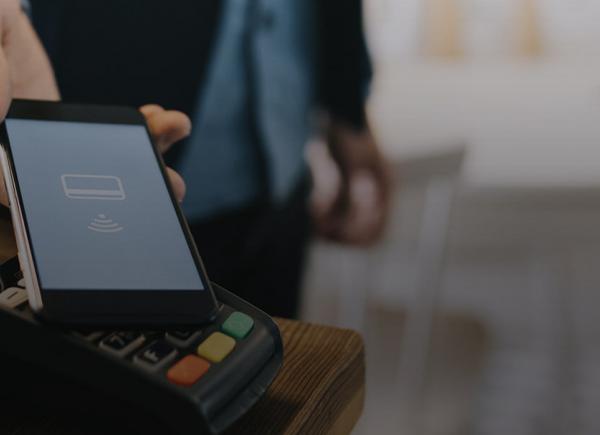What is ACH Debit?
An Automated Clearing House (ACH) debit transaction is an ACH transfer that occurs when the recipient's bank pulls the funds from the originator's bank, with the originator's permission. It can be made in the form of an automatic bill payment, like when you set up monthly recurring payments to your cable company.
ACH debit transactions are more common than ACH credit transactions. According to NACHA (National Automated Clearinghouse Association, the organization that makes the rules about ACH payments), there were 193.5 billion ACH debit payments and 266.6 billion ACH credit transactions in 2020.
ACH Debit vs. ACH Credit
There are a few differences between ACH credit and ACH debit transactions:
- ACH debit gets "pulled," ACH credit gets "pushed."
- ACH credits are usually payments from enterprise companies to vendors and suppliers, or direct deposit to employees. ACH debits are usually payments from individuals to service providers like an insurance company or utility provider.
- ACH credit transactions need to be pre-funded. That is, you need to have money or a credit reserve balance in your merchant account.
How Does ACH Debit Work?
An ACH debit requires permission from the payment originator to the recipient, but this can often be in the form of standing permission, such as scheduling regular bill payments to your mobile phone carrier. The payment originator provides the phone carrier with their account number, routing number, and authorization to withdraw the payment each month.
While ACH debit payments work just like debit card payments, debit card transactions incur processing fees just like credit cards do and end up costing merchants a lot more than ACH debit payments.
Types of ACH Debit Transactions
The ACH network supports many different types of debit transactions. Here are some of the most common ones and their Standard Entry Class (SEC) codes:
- ARC (Account Receivable Entry) – An ACH debit that occurs when payment is received for an account receivable in the form of a paper check received by mail or at a dropbox location and converted into an electronic ACH payment.
- BOC (Back Office Conversion) – An ACH debit used when someone purchases goods or services by a check that is presented to a person or a manned bill payment location. The check is processed later in the back office and converted into an electronic ACH payment.
- MTE (Machine Transfer Entry) – An ACH debit used when an ATM withdrawal is made.
- POP (Point-of-Purchase Entry) – Used when a physical check is received in person and immediately converted into an ACH debit. The check is voided and returned at the point of purchase.
- POS (Point-of-Sale-Entry) – Used when the debit is initiated at an electronic terminal for a point-of-sale transaction.
- PPD (Prearranged Payment & Deposit Entry) – A credit or debit entry to the account of a receiver based on a standing or one-time written authorization.
- SHR (Shared Network Transaction) – Used when the debit is initiated at an electronic terminal at the point of sale. The entry is initiated into a shared network.
- TEL (Telephone-initiated Entry) – Used when an individual provides an oral authorization by phone to debit their account.
- WEB (Internet-initiated Entry) – Used when an individual authorizes the debit online over the Internet or a wireless network.
How Long Does ACH Debit Take to Clear?
NACHA rules state that the average ACH debit transaction settles within one business day after it is submitted, though there is a same-day ACH option that can speed the process. Same-day ACH isn’t a real-time payment method, but simply ensures that bank transfers are sent in an expedited batch for processing on the same day. Operating hours for Same Day ACH were extended in March 2021, with the ACH Network now settling payments four times a day.
How Can ACH Debit Transactions Help Businesses?
The savings, security, and reliability of ACH payments make them a popular alternative to credit transactions, wire transfers, and paper checks. Here are just a few of the many business-to business-ACH benefits:
Zero processing fees – B2B ACH transfers are typically free of any processing fees, making them ideal for businesses who must make frequent payments to a number of different clients.
Cost-effective transaction fees – Other electronic payment methods like wire transfers or credit card processing come with higher transaction fees compared to B2B ACH payments. Transfers on the ACH Network are usually free, but depend on the policies of the financial institutions involved in a transaction.
Simple setup – The only information required to initiate a B2B ACH payment is the bank account number and routing number of both parties involved. This not only makes setup easier for clients, but more secure than credit cards whose numbers change more frequently than direct bank account information.
Easy access to electronic payment records – Businesses can track payments for invoicing with ease, thanks to artificial intelligence and machine learning technology that speed up the time it takes to track down paper payment records.
Is ACH Debit Secure?
Regulated by the federal government and managed by Nacha, ACH payments are recognized for being more secure than other forms of payment. This is because transactions that go through the ACH Network have to be completely verified and authorized before they can be processed. Nacha enforces ACH operating rules and regulations to help keep ACH payments secure.
The two-step transaction process that ACH payments undergo require both the consumer’s account information and permission to move funds directly from their account. These steps verify if credit card holders are who they say they are to decrease fraud and mitigate risk.
Security advantages of using ACH include eliminating paper checks, scheduling regular payments, reducing human error, and avoiding the problems of card skimmers often found on retail credit card terminals.
NACHA's ACH Debit Rules
Nacha has also implemented a rule that took effect March 19, 2021.This rule supplements the existing rule requiring ACH Originators of WEB debit entries to use a "commercially reasonable fraudulent transaction detection system" to screen WEB debits for fraud. With the new rule, ACH Originators are also required to use account validation as part of their commercially reasonable fraudulent transaction detection system. This supplemental requirement applies to the first use of an account number, or changes to the account number.
Under this NACHA rule, companies in a variety of industries are responsible for evaluating different account validation and verification solutions, such as instant bank account verification, in order to comply with the rule and increase fraud protection.
Learn more about what NACHA is or continue learning about ACH in our complete ACH primer.




